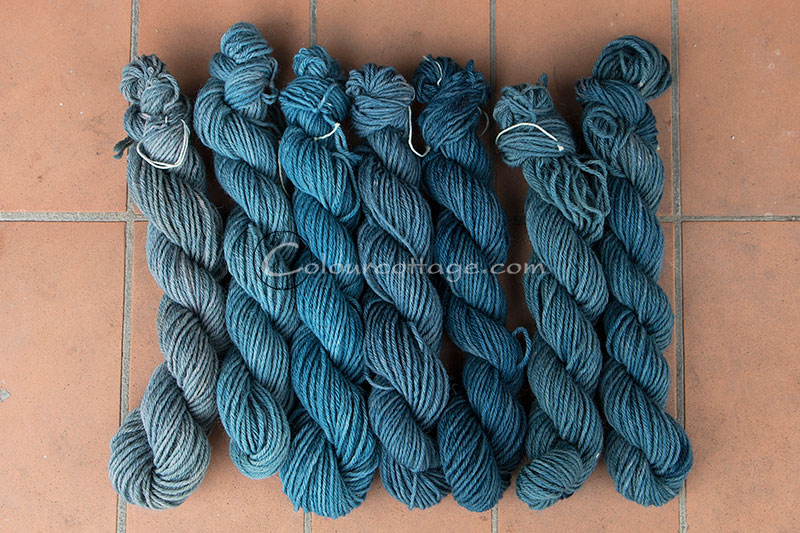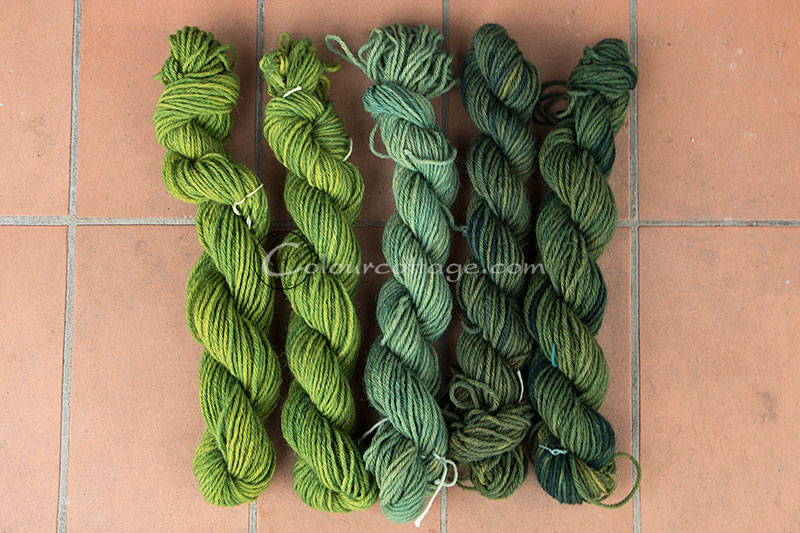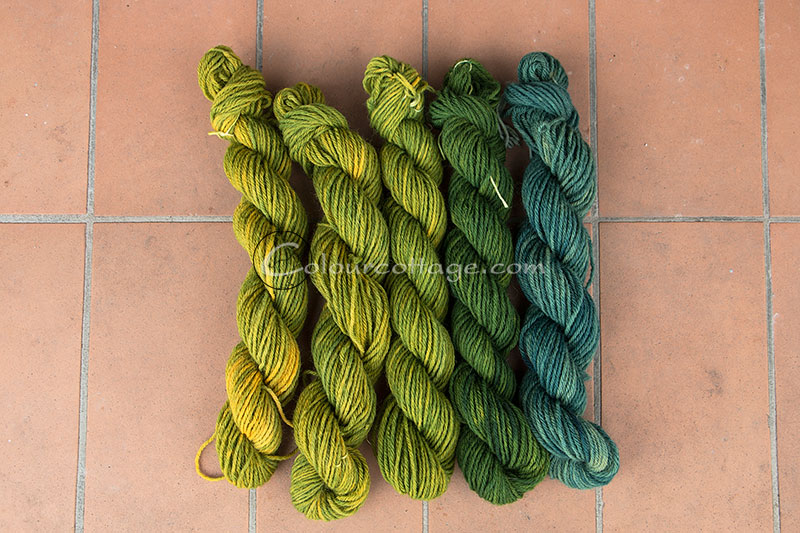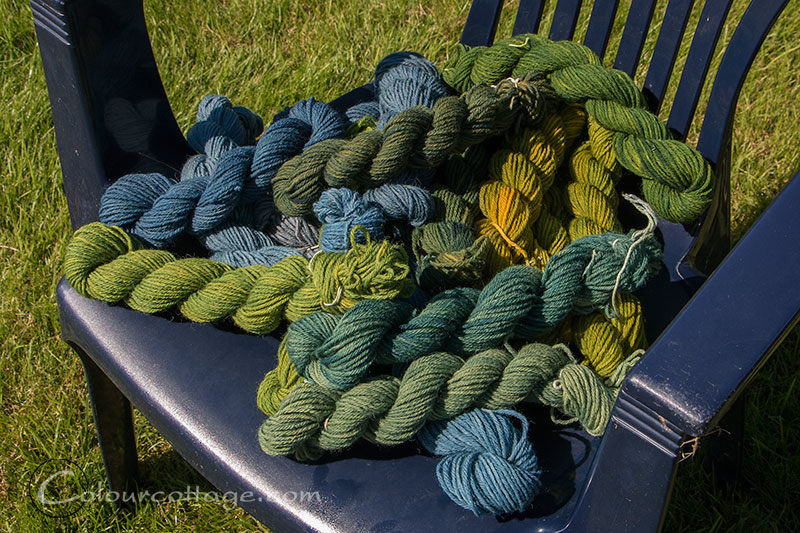I created this post 2 years ago with the intention of writing a series devoted to different procedures. But my woad crops failed and other stuff happened, as per usual, and here we are. So while waiting for black paint to arrive some time in the distant future; in between holiday house chores, I have a bit of green for you.

Lincoln green is the name of a colour presumably created by first dyeing with woad, then weld. WIKI I’ve tried a few times to overdye yellow yarn with blue, but it always contaminates the whole dye bath, rendering everything a greenish shade and not so clear blues. This could be my sloppy rinse process, but I have read the same description elsewhere. I’ve yet to get a really deep blue, probably because my ratio of chemicals has been off and some form of contamination or too much oxygen added when I pull out the first batch.
I only use a hydrosulfite vat, since a yeast vat is much too complicated for me to monitor; I just barely keep my sourdough alive from bread to bread.

I have no idea what exact shade lincoln green is, and I don’t care, I’ve simply decided to use it as a focal point. A glance at a google search says the colour could have been more like olive or even grey, so I’ve declared artistic license. I got fed up with the frenzy of constantly throwing everywhich plant into the pots all summer, been there, done it. And of course the slug infestation making away with much of my gardening, including dye plants. So I’ll be playing with blues, and then I’ll overdye them with yellow. On mordanted and unmordanted yarn, to compare how the yellow takes/holds up over time. And that will be my main plant dye practice for a while.

This year, despite slugs, I had quite a bit of woad because I found the right time to sow the seeds, and the slugs only eat holes in them, not the entire leaves. But of course, now I hardly have any weld… I ended up dyeing a few blue skeins and then as an experiment used the one huge 2nd year weld which was close to dyeing by mid August for my yellow. It didn’t contain the strong, brilliant dye that I’m used to, but I did get some green shades. I love having a gazillion different greens (in fact I’m a bit peeved when I get 3 of the same shade – but absolutely love the mottled effect), so it will be awesome to compare when hopefully next year I have both plants and get my experiment going a bit sooner in the season.






These are lovely shades of green. The whole world of vats seems to complicated to me. I have tried eco printing with woad with limited results and am hoping to grow weld this year. I have loads of woad seeds, someone told me you can get colour from these as well.
Well, be sure to let me know if you get anything other than cream from that….. :-/
Weld is bloody amazing, just keep the temp under 70C or it turns brown.
Love all those greens, but then again I am happy with any shade of green! No real chance of dyeing wool here these days, hopefully soon!
You’re always so busy – I can’t believe the amount of things you manage to do. Reminds me I have to go check if my little apple tree is ready for picking…
I love messing about with colors and seeing the differences that overdyeing can make. I haven’t tried using plants for that yet, though, still using acid dyes. But you inspire me to give it a shot! I have NO idea what weld and woad are, though. Either we haven’t got them here, or they have other names. I will have to do some research.
In the US woad is illegal to grow in some places because it spreads easily. Neither are typical garden plants, but they were used extensively as dye plants before synthetics were invented, weld is very colourfast. You can buy seeds online, and weld works in dried form also, I’v done that if I didn’t have time to use them fresh.
If you’ve seen Braveheart, woad is also what the scots used to colour their faces.
Thank you! I am very careful about invasives, so I will stay away from woad! And I have seen Braveheart, and loved it! Even went to Stirling because of it. 🙂
Lovely! I too never met a shade of green I didn’t like (maybe couldn’t wear though…)
Gorgeous.
Sikke nogle herlige grønne! Så du forskel på rækkefølgen af blå og gul, eller er det bare tilfældighedernes spil?
Der er vel ikke den store forskel på farvenuancerne, egentlig, men gryden holder længere når den ikke bliver forurenet med gul. Hvis man gerne vil have mange forskellige grønne kan man med fordel bruge forskellige gule planter. Garnet skal stadig bejdses med alun for at tage den gule farve, men om det så er smartest at gøre allerførst, som jeg har gjort her fordi jeg har et lager af bejdset garn, eller om den korrekte rækkefølge er blå-alun-gul, det må komme an på et senere forsøg.